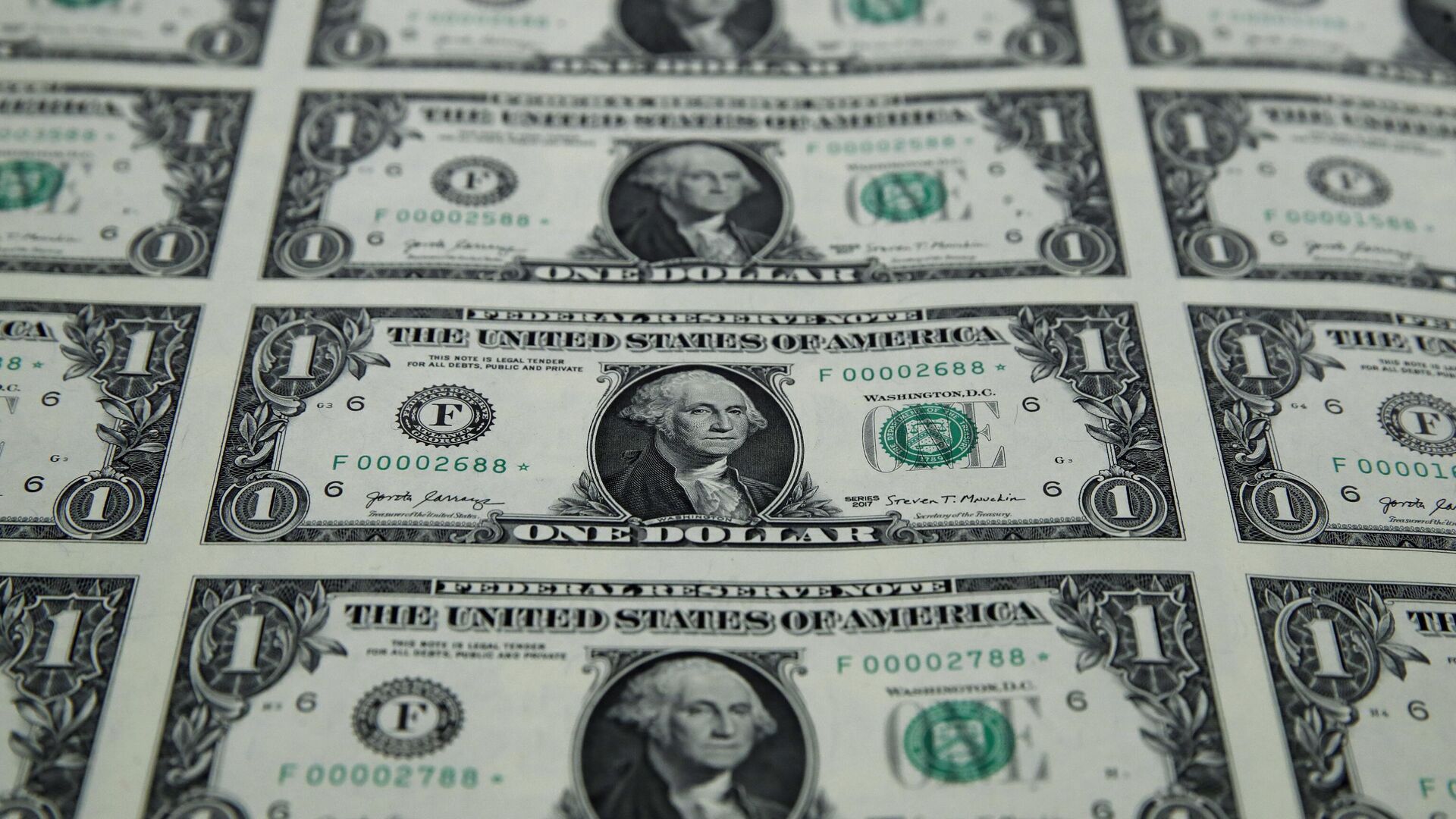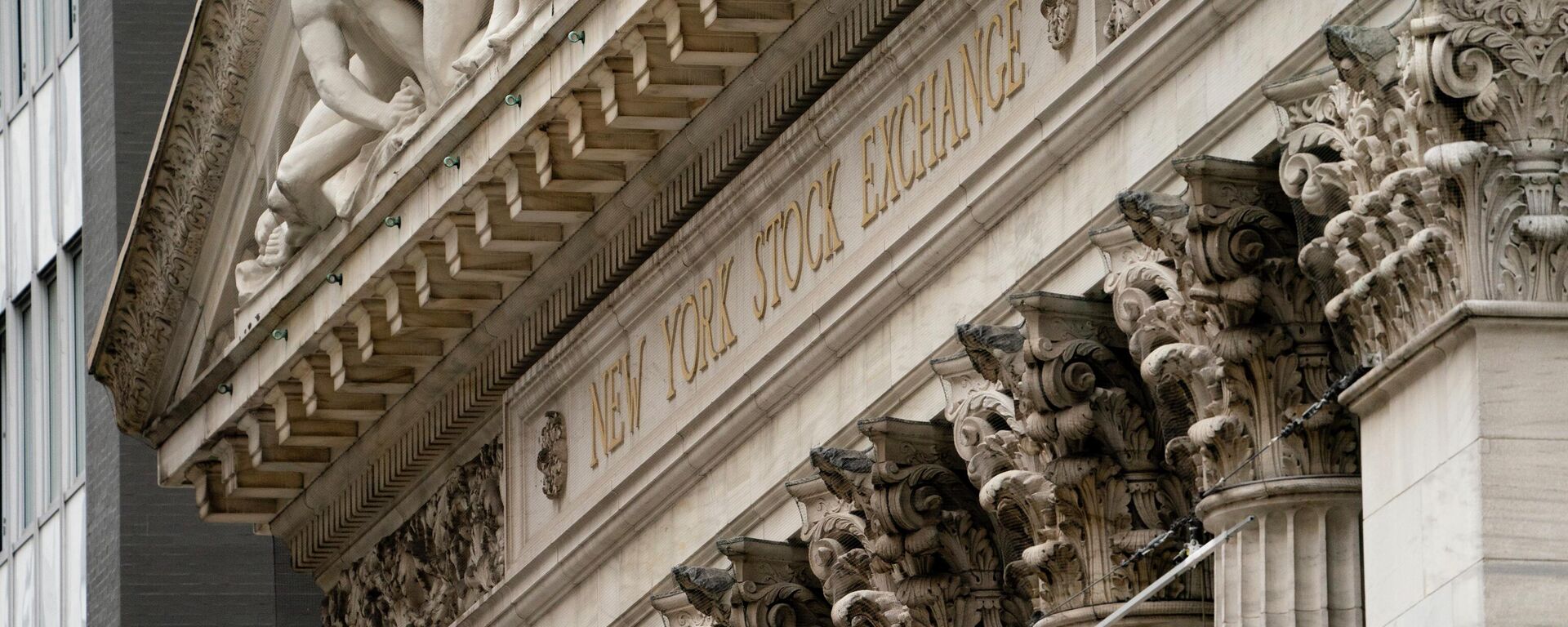https://sputnikglobe.com/20240917/big-cut-or-small-us-federal-reserve-dealt-tough-hand-on-wednesdays-rate-decision-1120183059.html
Big Cut or Small, US Federal Reserve Dealt 'Tough Hand' on Wednesday's Rate Decision
Big Cut or Small, US Federal Reserve Dealt 'Tough Hand' on Wednesday's Rate Decision
Sputnik International
The wait for a US interest rate cut might finally be ending, with the Federal Reserve expected to approve on Wednesday the first easing of rates since it stopped in mid-2023.
2024-09-17T23:34+0000
2024-09-17T23:34+0000
2024-09-17T23:34+0000
economy
us
jerome powell
federal reserve
us economy
interest rate
inflation
https://cdn1.img.sputnikglobe.com/img/07e8/01/09/1116078135_0:160:3073:1888_1920x0_80_0_0_75cf253e3161861f09f2c2ff7b39ffe1.jpg
But the drama over how much the Fed will cut hereon is far from over, analysts said, citing market expectations against what the central bank might do. Take, for instance, the upcoming rate decision: A plunge in consumer price inflation over the past two years and a slowing jobs market despite positive economic growth suggests the central bank could do an aggressive cut at the close of its September 18 policy meeting. Investing.com’s Fed Rate Monitor Tool shows the odds for a 50-basis, or half-point cut, at 62% versus the 38% for a 25-basis, or quarter-point cut. Yet, still-elevated costs for things such as shelter, airfares, auto insurance, education and apparel could convince some decision-makers at the Fed to begin its easing cycle with a smaller snip. For context, Button pointed at US stocks, which up to Tuesday had rallied seven days in a row in anticipation of a 50-basis point rate cut. It’s not just the past week; Wall Street has had a dizzying run since the year began, mostly fueled by rate cut bets. The S&P 500 index for the top 500 US stocks is up 18%. The broad-based Dow Industrial Average index has gained 10%. The tech-heavy Nasdaq Composite index has added 17%. Button noted that the stock indexes were running into major resistance and the central bank is likely to "disappoint, no matter what they do.” The pressure will then be on Fed Chair Jerome Powell to communicate at his best and guide markets to what's likely to come next, he said. The last time the Fed cut rates was in March 2020 when it dropped 100-basis points right after the outbreak of the pandemic. It added 525 basis points over the next three years, leaving the door open for a long and extended easing when conditions warrant. When those conditions would be ripe for a change had always been a matter of debate. A labor market that exploded even before the ravages of COVID-19 were over took Fed policy-makers by surprise, delaying a rate cut that otherwise might have happened by mid-2023 when the central bank paused on its hiking spree, analysts said. Adding to the conundrum was inflation, which remained stubborn longer than thought. The Consumer Price Index (CPI) hit a four-decade high of 9.1% per annum in June 2022 and remained well above the Fed’s 2% target until June this year. But data over the past months had consistently indicated a turn in the inflationary tide. The United States added 142,000 non-farm payrolls in August, the Labor Department said Friday, some 23,000 jobs below Wall Street estimates. That compared with the 315,000 positions created in April. The CPI slowed to a growth of 2.5% per annum in August, finally coming within sight of the Fed’s 2% target. Then, on Tuesday, retail sales for August showed a 0.1% annual growth versus the forecast of minus 0.2%. That suggested to some the economy was still alive and kicking — making the case for the Fed to go with both a 25 basis-point or 50-basis point cut. "The stronger than expected retail sales data for August suggest that, boosted by rapid wealth gains and falling energy prices, consumers continue to spend freely despite the labor market slowdown," Capital Economics North America economist Olivia Cross said in a note to the advisory’s clients on Tuesday. With consumption still very healthy, for now, “recession fears appear overblown,” allowing the Fed to draw cuts out over a longer term, she added. Money market traders are betting the Fed could cumulatively reduce anywhere between 75 basis points and 100 basis points at the three rate decisions left before the end of this year. The central bank has made one thing clear: Whatever it does will be guided by data. And data as of now has been mixed, suggesting inflation was easing but could pick up if economic growth surprises to the upside.
https://sputnikglobe.com/20240802/wall-street-has-worst-week-since-april-despite-jobs-report-hinting-september-rate-hike-1119616411.html
https://sputnikglobe.com/20240830/oil-prices-tumble-for-2nd-month-as-demand-worries-usurp-middle-east-risk-1119964093.html
Sputnik International
feedback@sputniknews.com
+74956456601
MIA „Rossiya Segodnya“
2024
Sputnik International
feedback@sputniknews.com
+74956456601
MIA „Rossiya Segodnya“
News
en_EN
Sputnik International
feedback@sputniknews.com
+74956456601
MIA „Rossiya Segodnya“
Sputnik International
feedback@sputniknews.com
+74956456601
MIA „Rossiya Segodnya“
what is the us federal reserve, how many interests hikes took place in us, us interest rates,
what is the us federal reserve, how many interests hikes took place in us, us interest rates,
Big Cut or Small, US Federal Reserve Dealt 'Tough Hand' on Wednesday's Rate Decision
WASHINGTON (Sputnik) - The wait for a US interest rate cut might finally be ending, with the Federal Reserve expected to approve on Wednesday the first easing of rates since it stopped in mid-2023 a hiking spree that began the inflation ramp-up from the coronavirus pandemic.
But the drama over how much the Fed will cut hereon is far from over, analysts said, citing market expectations against what the central bank might do.
Take, for instance, the upcoming rate decision: A plunge in consumer price inflation over the past two years and a slowing jobs market despite positive economic growth suggests the central bank could do an aggressive cut at the close of its September 18 policy meeting.
Investing.com’s Fed Rate Monitor Tool shows the odds for a 50-basis, or half-point cut, at 62% versus the 38% for a 25-basis, or quarter-point cut.
Yet, still-elevated costs for things such as shelter, airfares, auto insurance, education and apparel could convince some decision-makers at the Fed to begin its easing cycle with a smaller snip.
“In a world where the Fed is a punching bag and perception is reality, that's a tough hand to be dealt,” economist Adam Button said on the ForexLive forum, referring to the central bank’s dilemma.
For context, Button pointed at US stocks, which up to Tuesday had rallied seven days in a row in anticipation of a 50-basis point rate cut.
It’s not just the past week; Wall Street has had a dizzying run since the year began, mostly fueled by rate cut bets. The S&P 500 index for the top 500 US stocks is up 18%. The broad-based Dow Industrial Average index has gained 10%. The tech-heavy Nasdaq Composite index has added 17%.
Button noted that the stock indexes were running into major resistance and the central bank is likely to "disappoint, no matter what they do.”
The pressure will then be on Fed Chair Jerome Powell to communicate at his best and guide markets to what's likely to come next, he said.
“If they cut 25 bps and stocks fall, it will be seen as a sign they didn't do enough and fell behind the curve,” Button said. “If they cut 50 bps and stocks fall, it will be seen as a move that spreads panic.”
The last time the Fed cut rates was in March 2020 when it dropped 100-basis points right after the outbreak of the pandemic. It added 525 basis points over the next three years, leaving the door open for a long and extended easing when conditions warrant.
When those conditions would be ripe for a change had always been a matter of debate.
A labor market that exploded even before the ravages of COVID-19 were over took Fed policy-makers by surprise, delaying a rate cut that otherwise might have happened by mid-2023 when the central bank paused on its hiking spree, analysts said.
Adding to the conundrum was inflation, which remained stubborn longer than thought. The Consumer Price Index (CPI) hit a four-decade high of 9.1% per annum in June 2022 and remained well above the Fed’s 2% target until June this year.
But data over the past months had consistently indicated a turn in the inflationary tide.
The United States added 142,000 non-farm payrolls in August, the Labor Department said Friday, some 23,000 jobs below Wall Street estimates. That compared with the 315,000 positions created in April.
30 August 2024, 21:03 GMT
The CPI slowed to a growth of 2.5% per annum in August, finally coming within sight of the Fed’s 2% target.
Then, on Tuesday, retail sales for August showed a 0.1% annual growth versus the forecast of minus 0.2%. That suggested to some the economy was still alive and kicking — making the case for the Fed to go with both a 25 basis-point or 50-basis point cut.
"The stronger than expected retail sales data for August suggest that, boosted by rapid wealth gains and falling energy prices, consumers continue to spend freely despite the labor market slowdown," Capital Economics North America economist Olivia Cross said in a note to the advisory’s clients on Tuesday. With consumption still very healthy, for now, “recession fears appear overblown,” allowing the Fed to draw cuts out over a longer term, she added.
Money market traders are betting the Fed could cumulatively reduce anywhere between 75 basis points and 100 basis points at the three rate decisions left before the end of this year.
The central bank has made one thing clear: Whatever it does will be guided by data. And data as of now has been mixed, suggesting inflation was easing but could pick up if economic growth surprises to the upside.



